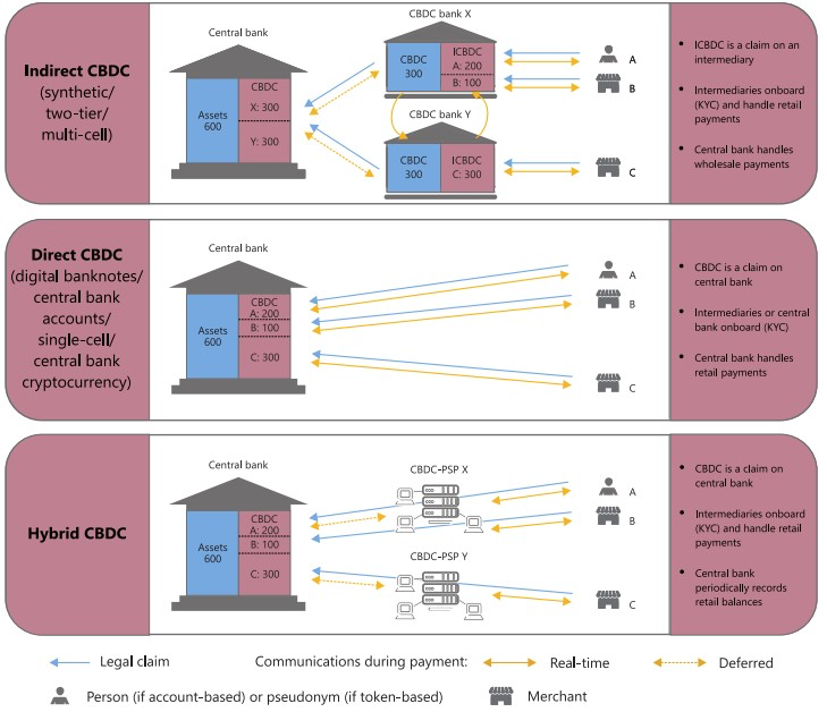
Digi Műhely | Robosztus alkalmazás-ökoszisztémák blokklánc alapú digitális jegybankpénz rendszerekben
CBDC-alapú intelligens szerződéses ökoszisztémák
A tanulmány angol nyelven íródott, magyar nyelvű változata nem elérhető, eredeti címe: CBDC-based smart contract ecosystems
Készítette: Imre Kocsis, László Gönczy, Attila Klenik, Pál Varga, Attila Frankó, Bence Oláh
Beyond the core ”money” functionality (central bank issued electronic legal tender usable as a medium of exchange), CBDCs have a wide range of proposed use cases – from monetary through fiscal to public sector ones.
Central Bank Digital Currency (CBDC) is ”a digital form of central bank money that is different from balances in traditional reserve or settlement accounts”. The evolving public stance of central banks in conjunction with CBDCs, the large number of experiments, proof of concept implementations and even a few production implementations[1] foreshadow that, in the coming years, more and more central banks will begin to create novel digital forms of central bank money.
Why the global interest in augmenting existing (digital) money and cash through digital central bank money is arising right now – and at the same time, practically everywhere – is not easy to pinpoint. The fundamental economic concept – or rather, concepts – coined as CBDC has, have been around for a long time; and although a consensus seems to be forming around the much sharper definition of a CBDC being a ”digital payment instrument, denominated in the national unit of account, that is a direct liability of the central bank”, the various monetary, societal (and even fiscal) value drivers, which are cited globally, are very varied. For a stark contrast, it is worthwile to compare the opportunity analysis of the Bank of England which largely focuses on maintaining a resilient payments landscape (even with the decline in the use of cash) with the eCNY pilot of the People’s Republic of China, which, experts seem to agree, has strong finance control purposes.
That being said, in science fiction parlance, it seems to be steam engine time: all the precursor ideas and technological inventions[2] are in place now to answer to broadly similar requirements; and it seems like that, suddenly, everybody is building steam engines – that is, CBDCs.
With the ongoing developments as a backdrop, the work we undertook and report on in this paper tried to look at the next step ahead: when CBDCs will finally become a reality, how will they impact life beyond the original, payment and money transfer oriented CBDC use cases?
Our specific research goal was to demonstrate that it is technically viable to equip smart contract technology – already a game-changer in many sectors – with the ability to use retail[3] CBDCs and the benefits of doing so for industrial use cases.
However, in the current absence of open CBDC implementations, first we also had to design and implement a retail CBDC prototype. This report describes the following results:
- Technical design considerations for a retail CBDC which uses distributed ledger technology to meet integrity, availability and resilience requirements.
- The implementation of a CBDC prototype system.
- A representative smart contract based solution for an industrial asset management cooperation scenario.
- Integration of the CBDC prototype with the consortial blockchain network hosting the industrial solution through asset bridging.
- Demonstration of the integrated system.

In this work, we have reported on the design and prototyping of
- a Hyperledger Fabric based retail CBDC system,
- an industrial smart contract application,
- the Hyperledger Fabric based issuance of CBDC to the blockchain supporting the industrial cooperation
- and the usage of the so created funds in the industrial cooperation smart contracts.
[1] See, e.g., the site https://cbdctracker.org
[2] Including cryptocurrencies and blockchain technologies.
[3] Widely accessible; in contrast to wholesale CBDCs, which are restricted to financial institutions.
Kulcsszavak: CBDC; bitcoin; DLT platforms; Ledger model
